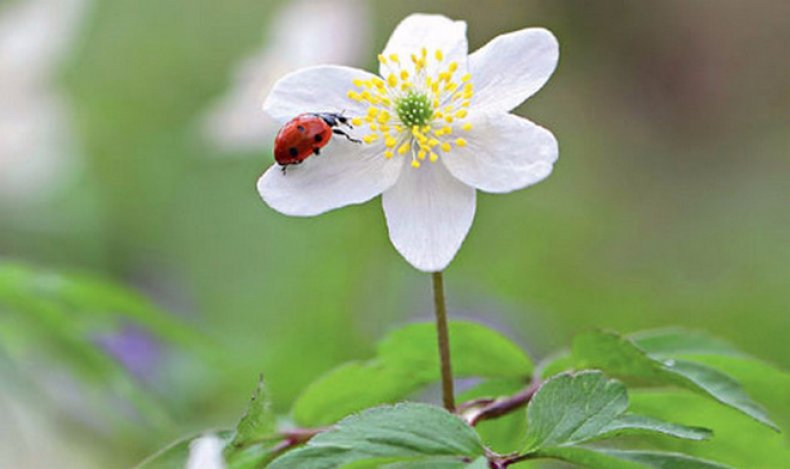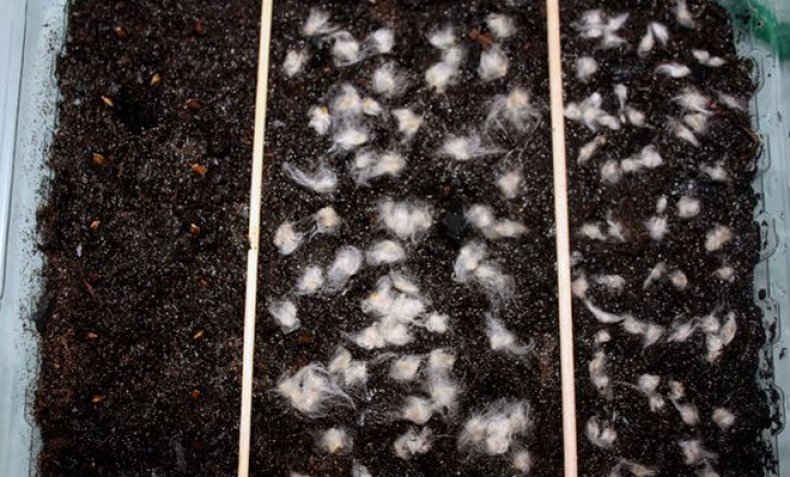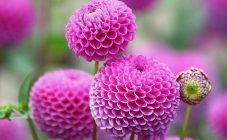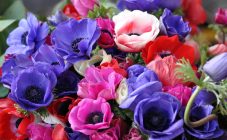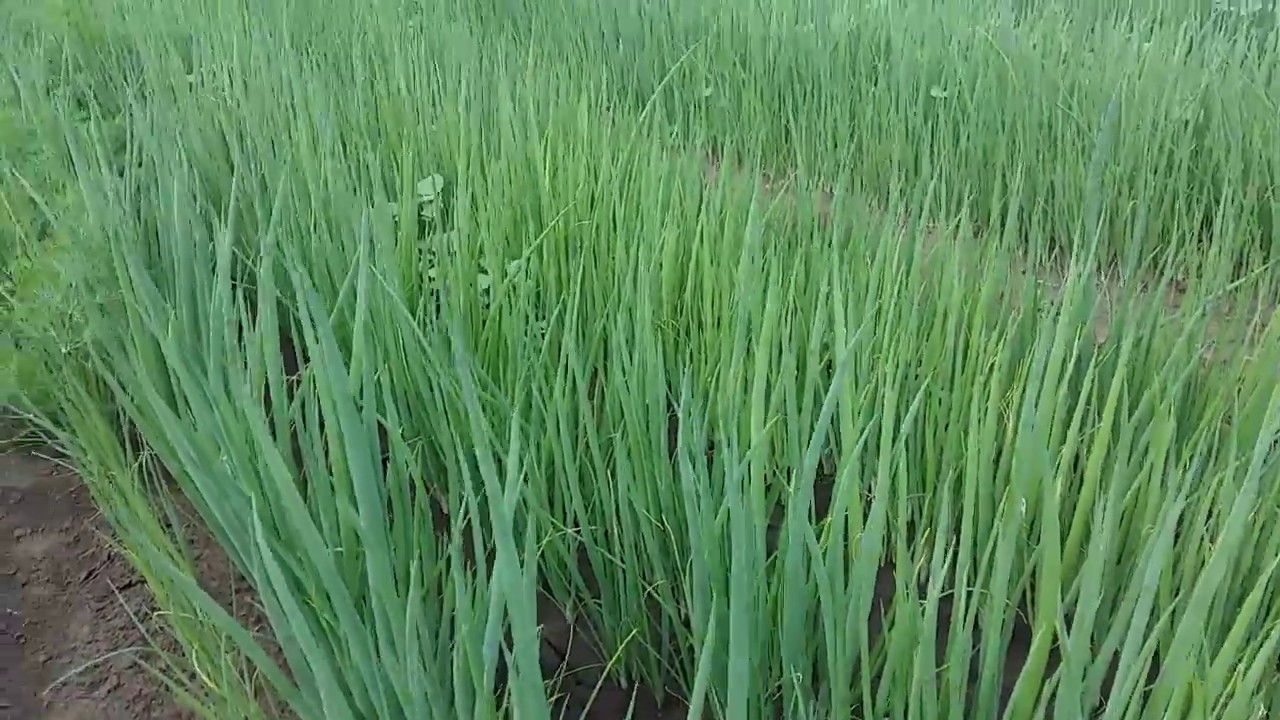Content:
Anemone, or Anemone, is a delicate little flower. The plant grows independently in the wild and is grown in garden plots. The variety of species and unpretentiousness in planting and caring for a culture allow it to decorate a garden at will.
Description of culture
Perennial herb anemone belongs to the Buttercup family. The garden flower anemone is otherwise called anemone (translated from Latin, the name means "wind", literally "daughter of the winds"). In the genus of anemones, there are more than 120 species of flowers. Depending on the variety, flowers are distinguished by color, size and flowering time. They can bloom in spring, summer or fall.
Plant characteristics:
- The plant grows up to 20-60 cm in height;
- The root system is horizontal, tuberous;
- The leaves begin to grow from the base. There are complex or simple leaves, the stem is flexible;
- Flowers are single, symmetrical, with small rounded leaves, pronounced pith;
- The color of flowers is white, yellow, pink, blue, purple;
- During the flowering period, the anemone emits a pleasant delicate aroma;
- The anemone is a bisexual flower;
- The plant propagates by seed or by dividing the rhizome;
- Anemone grows well on sandy or calcareous soils with neutral acidity;
- You can plant an anemone on the sunny side of the site or in partial shade. With strong shading, the flower does not develop well;
- The plant does not overwinter in the open field, it must be dug up in the autumn. The tubers are stored in a dark cool room and planted again in the spring in the garden;
- It is convenient to drive the flower on certain dates, for example, March 8th. Seedlings are grown in greenhouses.
Anemone varieties
Varieties of anemones differ not only in external characteristics, but also in recommendations for the choice of soil, site location and planting time.
The main varieties of forest anemones, herbaceous plants for open ground:
- Buttercup anemone. Grows in moderately humid and sunny forests in Eurasia. The root system is highly branched, creeping, growing horizontally. The flower grows up to 25 cm in height. In the wild, it grows with bright yellow flowers, 3 cm in diameter. For home gardening, varieties with purple flowers were bred. Anemone buttercup plant for reservoirs, begins to bloom in the second decade of May. Flowering period - 18-21 days;
- The anemone is tender. The plant in the wild is widespread in the Caucasus, Asia Minor and the Balkans. It grows on fertile soils of calcareous soil with medium moisture levels. The root system is a shapeless tuber. The total height of the tender anemone is 15-20 cm, the diameter of the flower is 7 cm, the color is pale purple. Breeders have obtained varieties with white, blue, pink flowers of decorative anemone tender;
- Anemone is a wild plant. In the wild, it grows in almost all forests of Eurasia. The rhizome is a tuber. The height of the stems in an adult plant ranges from 15-20 cm, the diameter of a blossoming flower is up to 4 cm.The color of wild-growing flowers is mainly white; species with a cream or lilac shade are less common. More than 30 varieties have been produced for decorative purposes. The most popular variety is Vestal with white double flowers;
- Japanese anemone. A hybrid variety of wild-growing bushes. The flowers are pink or white with a yellow heart. The flowering period lasts until October. The diameter of the flower is up to 8 cm. The bush grows up to 40 cm in height;
- Forest anemone. The type of anemone grows in the territory of northwestern and eastern Europe, in the foothills of the Crimea, the Caucasus and Siberia. The plant will grow up to 50 cm tall. The flower develops well in light forests. The root is upright, powerful. In early May, the forest anemone begins to bloom with small white flowers, up to 6 cm in diameter. In the wild, flowers sometimes turn red. When planting this species in a garden, you will need to place a limiter at a depth of 20-25 cm in order to avoid uncontrolled growth of the flower;
- Rock anemone. The flower grows on a hill, 2.5-3 km. A native rock anemone from the Himalayan mountains. The root system looks like a small bunch. The roots grow into the ground by 15-20 cm. In mid-May, the flowering period begins, it lasts 3-4 weeks. The petals are snow-white, with a deep purple hue on the back.
Agrotechnics
Forest anemone can be planted in sandy depleted soils.
If the anemone has a tuberous root system, then it is recommended to add dolomite flour or limestone to the soil, the optimal acidity level is 7-8 pH.
When preparing a site for planting a flower, ash, organic and mineral fertilizers can be added to the soil. The more nutritious the soil, the better and more actively the anemone will bloom. In the process of growth, it is recommended to feed the plant.
The flower propagates by seed and vegetative means. The use of seed propagation in gardening is not common, because the process is laborious, long, seedlings require special care.
Seed planting rules:
- The main condition is to sow fresh seeds. It is important to plant immediately after collecting the seed;
- Pour nutritious, loose soil into the container;
- The seeds are buried 0.5 cm, carefully sprinkled on top with a layer of soil;
- Pour the container with a spray bottle;
- After sowing, the boxes are recommended to be buried in the ground.
The most common ways of breeding anemone:
- By dividing a tuber or bush. This method is suitable for propagating a flower with tuberous roots. The divided tuber should have 2-3 healthy buds. It is recommended to divide the tuber during the dormant period (July-August). By dividing the tuber, tender, Caucasian, Apennine and crown anemone reproduce;
- With the help of suckers. At the end of the flowering period, root suckers form from the adventitious buds of the plant. Breeding occurs in early spring or August. In a similar way, Canadian anemone, forked, forest anemone reproduce.
Anemone can grow well in the garden on its own. The gardener will need to carry out standard plant care manipulations. Plant care recommendations:
- Watering. Anemone needs regular, moderate watering. It is undesirable to allow drying out and stagnation of water in the area with flowers. With a lack of moisture, the flower begins to fade, with excessive watering, the roots can rot. In order to prevent stagnation of water, it is better to plant the plant on small hills so that excess moisture drains off on its own.In dry weather, watering is carried out daily in the morning or evening;
- Mulching. Mulching will help protect the flower from drying out the soil. To do this, lay a 5 cm layer on the site using fallen leaves or peat. Mulching protects against weeds;
- Loosening, weeding. The roots of the anemone are shallow, so weeding is best done by hand. Loose soil promotes the development of the root system and the ground part of the flower. Loosening should be done a few hours after watering using a garden tool. Deepen it no more than 5 cm;
- Top dressing. The plant especially needs additional feeding with complex mineral fertilizers during the flowering period. If, when planting in the first year, the site was fertilized in advance, then this is enough for the plant for one season. It is undesirable to use fresh manure as a top dressing.
Culture properties, application
The anemone is grown in garden plots to decorate the garden. The flower is appreciated for its unpretentious care and a long flowering period. In addition to decorative purposes, the plant is widely used in folk medicine.
The chemical composition of anemone has not been studied in detail. The main substance of the plant is the oak ephemeroid. The anemone contains toxic substances, therefore, it is necessary to use it carefully for the treatment of diseases.
Useful properties of anemone broth:
- Has a bactericidal effect;
- Has anti-inflammatory effect;
- Removes phlegm;
- Used in the treatment of fungal diseases;
- Helps with problems with the gastrointestinal tract, cardiovascular system;
- Copes with migraine attacks;
- It is used for rheumatism, dermatosis, etc.
There are contraindications to the use of anemone decoction:
- Allergic reaction, individual intolerance to the constituent substances;
- Vomiting;
- Stomach upset;
- Shortness of breath;
- Increased body temperature.
Diseases and pests
With improper care, anemone can be affected by various diseases:
- Sclerotiniasis. When a plant is damaged by sclerotinosis, the root system begins to rot, the disease spreads to other flowers. If sclerotinosis is detected, it is necessary to remove diseased plants along with a lump of earth. To avoid the further spread of the fungal disease, neighboring flowers are treated with Rovral;
- Downy mildew. On the leaves of plants, you can see the appearance of a whitish bloom, on the underside of the leaves - a bloom of gray. To combat the disease, the drugs Previkur, Ridomil Gold, and Copper Oxychloride are used. To prevent downy mildew, it is necessary to monitor the humidity level, especially if the flower is grown in a greenhouse;
- Aphid. The foliage begins to turn yellow, the edges curl up. You may notice a sticky discharge of the pest on the plant. If the anemone is affected only in a small area, then the affected leaves and stems are removed and burned. With a strong spread of the disease, it is recommended to carry out treatment with drugs: Akarin, Spark, Bison, Tobacco dust.
In order to prevent the development of diseases, it is important to regularly examine the flower for signs of illness. If detected, start pest control immediately. As a preventive measure, it is recommended to monitor soil moisture, regularly feed, and remove affected plant parts.
Anemone is distinguished by its ability to grow rapidly, and the flower bed is filled with small flowers of all kinds of shades.The flower does not require special experience and skills in growing and caring, therefore it is suitable for planting even for novice gardeners.
